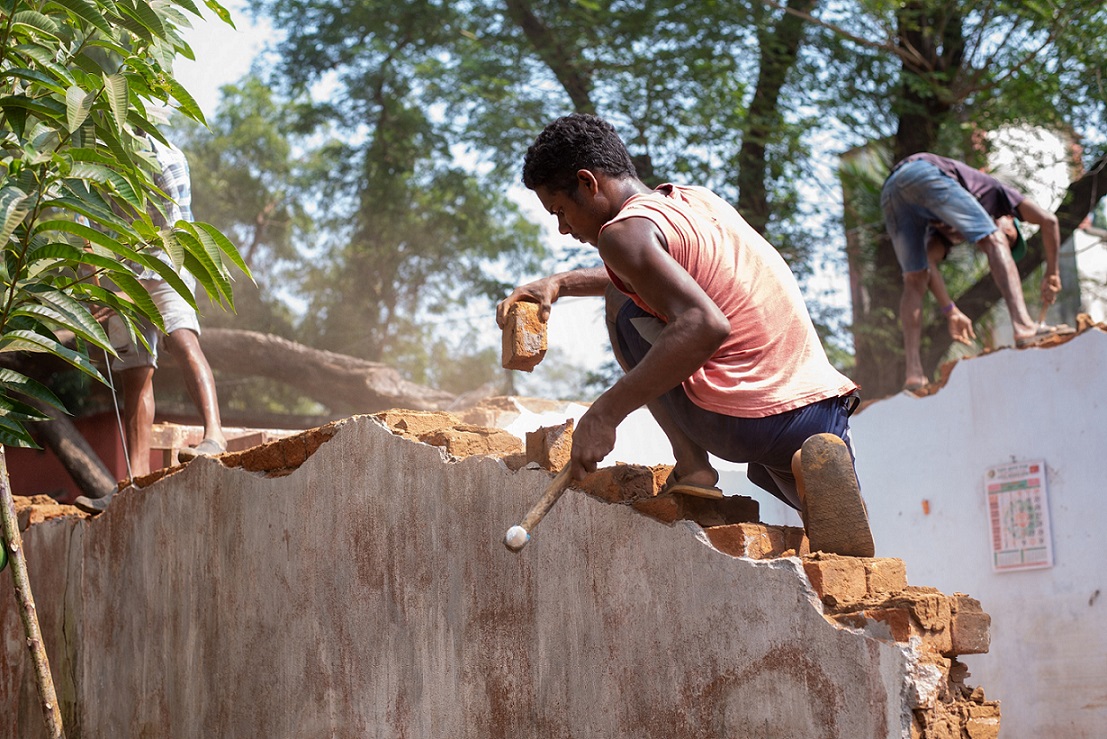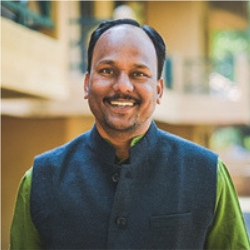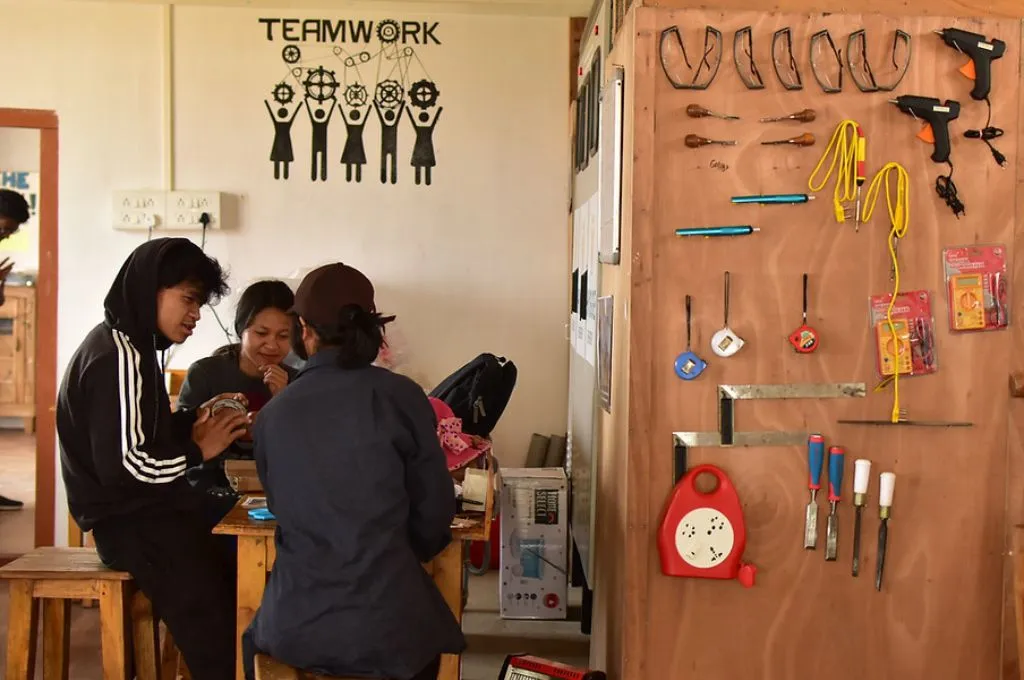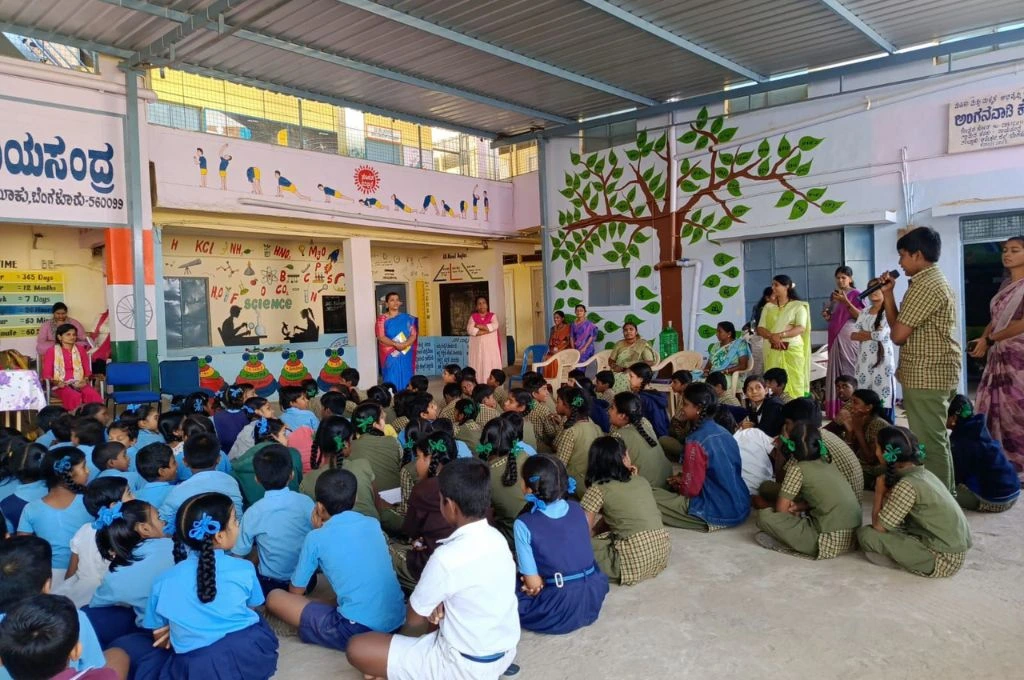The COVID-19 pandemic has exposed the vulnerability of migrant workers in a manner that cannot be ignored. Migrant workers have walked hundreds of kilometres to get home, been lathi-charged by the police while doing so, and hosed down with chemicals.
Two surveys 1 by civil society organisations confirm that a large number of these workers belong to the construction sector. State governments have been directed to use the INR 52,000 crore Building and Other Construction Worker (BOCW) cess to aid 3.5 crore registered construction workers during the COVID-19 pandemic. The extent to which this will be implemented, however, remains to be seen.
The seeds of this crisis were sown a long time ago
The current scenario is just a culmination of decades of questionable policy decisions.

In 1996, the Indian parliament enacted two laws to provide protection and dignity to this workforce. The first, the Building and Other Construction Workers Act (BOCWA) regulates the employment and conditions of service for building and other construction workers, and provides for their safety, health, and welfare. The second, the Building and Other Construction Worker Cess Act (BOCWCA) provides for the levy and collection of cess on the cost of construction incurred by employers, with a view to augmenting the resources of the BOCW Welfare Boards constituted under BOCWA.
The construction sector employs a majority of the informal workers in the country.
In 2018, the construction sector contributed 7.9 percent to India’s GDP, and employed more than 51 million people. About 87.4 percent of its workers were categorised as casual labour. The sector, therefore, employs a majority of the informal workers in the country.
Data from the central government indicates that there are 3.5 crore registered construction workers and that Haryana, for example has registered 7,63,373 workers. However, the Government of Haryana indicates that it has registered 4,56,446 workers. It is not clear how many of these registered workers are local workers and how many are migrant workers. None of the management information systems we have come across have differentiated between local and migrant labour across all sectors of labour.
In late March 2020, Jan Sahas interviewed 3,196 migrant construction workers from North and Central India, many of whom were walking back to their homes after the lockdown was announced. The survey found that 94 percent of the respondents did not have BOCW identity cards, which ruled out their chances of accessing relief or welfare measures.
Related article: COVID-19: Voices from the margins

The responsibility of registration under BOCWA falls on the establishment and/or the worker themselves. In order for a worker to be registered, they have to get an employer’s certificate confirming 90 days of employment in the current year. Whether a worker is registered or not largely depends on the manner in which they enter employment.
Most migrant workers arrive at cities and towns through a complex web of petty contractors and sub-contractors who are contracted by a principal employer. These sub-contractors usually belong to the same region or community as the migrant workers and hold a great deal of power over them in determining wages, living conditions, and job opportunities. It is rare for migrant workers, beholden to these sub-contractors, to make independent decisions to approach the labour department or its officers to register themselves, or to access other benefits and rights, for fear of an immediate fall out, and economic insecurity.
Migrant workers also take other routes: In many towns and cities, they go to labour nakas—public places where labourers wait to get picked up by contractors or employers for the day or week—once again making it impossible for them to register under BOCWA.
Today, many of these uncounted workers are stuck because of the national lockdown.
This low rate of registration reflects the first and most fundamental way in which the state and industry have failed to count and account for construction workers. Today, many of these uncounted workers are stuck because of the national lockdown. Neither do they have a way to contact the state, nor can the state contact them. Their contractors and principal employers have refused to take any responsibility.
A press release from the central government in February 2019 had advised state governments to make arrangements for construction workers, to mitigate hardships while in search of work, and provide transit accommodation or labour sheds-cum-night shelters, mobile toilets, and mobile crèches, especially for migrant workers. “If these facilities were available, we would not likely have seen the exodus that we saw of workers on foot from the Delhi and NCR region. These workers were overnight thrown out of the work sites with no wages paid, no place to live and food to eat,” says Subhash Bhatnagar, Coordinator of the National Committee for Central Legislation on Construction Labour.

Most migrant workers arrive at cities and towns through a complex web of petty contractors and sub-contractors. | Picture courtesy: Ajaya Behera, Gram Vikas
Among the multitude of labour laws that exist in the country, there is one that is meant to regulate the condition of service of inter-state labourers—the Inter-State Migrant Workmen (Regulation of Employment and Conditions of Service) Act, 1979. It requires every contractor who takes more than 20 workers from a source state to register his own agency, as well as the names of the workers, their identity and contact details, and to update this list every time there is a change in his business.
However, as with many of the other labour laws, this one sees little or no implementation and monitoring. Jan Sahas tracks the work patterns of over 1,20,000 migrant workers in Central India. Less than 100 of these workers say that they have been registered under this Act or even know of its existence.
Both BOCWA and the Inter-State Migrant Act require the following: Workers should be registered at source, employers should maintain registers of workers at construction sites, and there should be a record of the workers in the state labour department. However, there is nothing in the law, or in practice, to hold the state and industry accountable for non-compliance.
Related article: Supporting informal workers during the COVID-19 crisis
There are not enough people allocated to the issue of labour within the government, both at the centre and state levels.
To cite an example: The 2018 annual report of the Department of Labour in Karnataka states that it had only 23 staff, of which nine posts of labour inspectors were vacant. This is the team responsible for implementing BOCWA across all 30 districts in the state. It is also responsible for enforcing numerous labour laws—Maternity Benefit Act, 1961, Employees State Insurance Act, 1948, and others—in conjunction with different state-level committees and advisory members.
Limited staffing for crucial welfare work tremendously limits the quality and rigour of implementation, and perpetuates workers’ deep lack of confidence in the functioning of the state, despite the tremendous power it holds to impact positive change.
The collection of cess has been problematic as well. In March 2017, the Supreme Court of India, presiding over a case monitoring the implementation of BOCWA, stated that the “statistical information regarding the collection and utilisation of cess suggests nothing but a complete mess.” All the affidavits submitted to the court from the different government departments, including the Comptroller Auditor General’s (CAG) office, had different figures and were incompatible with each other.
States which collected the highest amount of cess have spent the least on the welfare of construction workers.
The amount of cess collected by states and union territories until March 2019 was INR 49,675 crore, but only 39 percent (less than INR 20,000 crore) has been utilised. There are also wide differences in the utilisation of cess across states. As many as 21 of the 37 states and union territories spent less than 30 percent of their collected funds. Kerala was the only state to have spent more than the collected funds (121 percent). Additionally, states which collected the highest amount of cess have spent the least on the welfare of construction workers. For instance, Maharashtra spent only five percent of the INR 7,402 crore that it had collected. Similarly, Delhi collected INR 2,190 crore, but spent only nine percent of the amount. Goa and Gujarat had the lowest utilisation of funds, at one and five percent respectively.
Related article: “The government response cannot begin and end with the lockdown”
An opportunity for reform
The COVID-19 crisis, and the lockdown in particular, have exposed the extreme vulnerability of millions of migrant workers who remain invisible to the state, industry, and the public at large.
Given the speculation around reverse migration and changes in labour trends because of the imminent losses that some industries will face, now will be a good time to undertake a more holistic assessment of future needs, while also keeping in mind the unique vulnerabilities of our migrant labour force.
While we all know that the impact of the lockdown is going to be devastating for the Indian economy, it still remains to be seen how deep the damage will be, and whether government and industry are willing to offer sustainable social and economic protections to ensure that 90 percent of India’s workforce, who are in the informal sector, don’t have to suffer any more than they already are. In particular:
- The migrant workforce that builds our country’s infrastructure and cities needs to be provided with portable worker identity cards that are compatible with technology, and enable real-time tracking of employment, registration, and benefits accrued across the country. The deployment of such infrastructure will allow them to work with dignity in any corner of the country, and claim basic rights such as access to nutritious food, clean water, and decent housing.
- The multiple existing levels of contracting and sub-contracting do not allow workers to claim benefits permitted by law. At the same time, unethical recruitment practices adopted by industry, and collusion and rent-seeking by the state and middlemen have become rampant. The Supreme Court’s directive to ensure that the State Welfare Boards are audited not just on financial matters, but also for compliance and performance will be a good starting point.
- The cess collected by the industry for the benefit of the construction workers has not improved the quality of service and labour. Given the volume of labour and the complexities involved, this issue cannot be solved by the state alone, and industry and civil society stakeholders need to come together on the same platform to commit to and invest in improving labour standards. Technology can be used to hold companies accountable by putting their contributions and the expenditure of the cess fund in the public domain. Diversification of the membership of the welfare boards to include industry and civil society representatives could also enable transparency in the distribution of power and resources.
- Government infrastructure projects employ millions of construction workers, most of whom are migrants. In many of these projects, the state’s investment is made possible by loans from large multinational financial corporations. There is immense scope for these international agencies to improve diligence, compliance, and redressal measures to ensure that investments are not exploitative of human and natural resources.
- Especially at a time when the economy is likely to crumble before it builds itself up, the state should consider universalising services such as the PDS, health and life insurance services, and universal basic income; and prioritise resilience for all, over fiscal deficit.
It should make us pause that after years of breaking rocks, welding in the heat, carrying heavy loads, and inhaling unclean air to create the infrastructure that fuels economic growth, workers don’t even have enough money to survive this period of lockdown. How do we create a system of labour and profit that is more balanced and equitable?
The crisis is also an opportunity for the state and industry to improve resilience by investing and implementing mechanisms that can enhance the economic and social security, skills, and dignity of the migrant worker.
- Voices of the Invisible Citizens from Jan Sahas and 21 Days and Counting from SWAN.
—
Know more
- Go through the ILO’s India Wage Report, which examines wage policies and wage inequality.
- Read about why wages lost as a result of the lockdown must be reclaimed and not treated as an unavoidable collateral loss.
- Learn about the history of BOCWA, and why construction workers have missed welfare benefits for 23 years.
Do more
- If you are part of any COVID-19 relief work in your neighbourhoods, look out for migrant labour/construction worker colonies and include them in your immediate relief efforts.
- If the organisations you work with are engaged with construction work of any kind (building renovation, infrastructure construction, and so on) please check about the recruitment and worker payment and living conditions.





